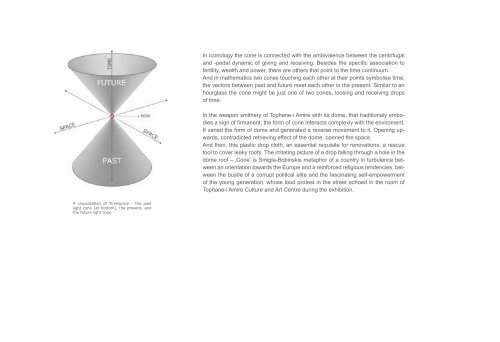Karina Smigla-Bobinski
Karina Smigla-Bobinski
Karina Smigla-Bobinski
You also want an ePaper? Increase the reach of your titles
YUMPU automatically turns print PDFs into web optimized ePapers that Google loves.
In iconology the cone is connected with the ambivalence between the centrifugal<br />
and -pedal dynamic of giving and receiving. Besides the specific association to<br />
fertility, wealth and power, there are others that point to the time continuum.<br />
And in mathematics two cones touching each other at their points symbolise time,<br />
the vectors between past and future meet each other in the present. Similar to an<br />
hourglass the cone might be just one of two cones, loosing and receiving drops<br />
of time.<br />
In the weapon smithery of Tophane-i Amire with its dome, that traditionaly embodies<br />
a sign of firmanent, the form of cone interacts complexly with the enviroment.<br />
It varied the form of dome and generated a reverse movement to it. Opening upwards,<br />
contradicted retrieving effect of the dome, opened the space.<br />
And then, this plastic drop cloth, an essential requisite for renovations, a rescue<br />
tool to cover leaky roofs. The irritating picture of a drop falling through a hole in the<br />
dome roof – ‚Cone‘ is <strong>Smigla</strong>-<strong>Bobinski</strong>s metaphor of a country in turbulence between<br />
an orientation towards the Europe and a reinforced religious tendencies, between<br />
the bustle of a corrupt political elite and the fascinating self-empowerment<br />
of the young generation, whose loud protest in the street echoed in the room of<br />
Tophane-i Amire Culture and Art Centre during the exhibition.<br />
A visualisation of Timespace - the past<br />
light cone (at bottom), the present, and<br />
the future light cone


